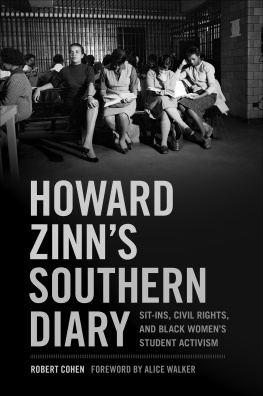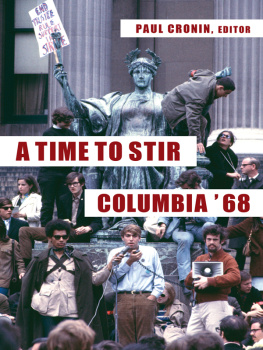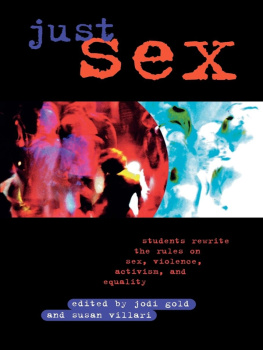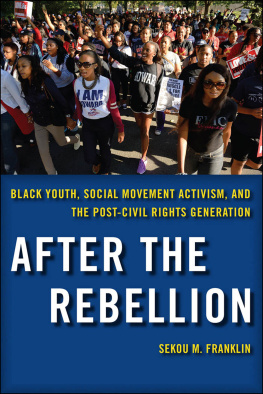Rebellion in Black and White
Rebellion in Black and White
Southern Student Activism in the 1960s
Edited by
ROBERT COHEN AND
DAVID J. SNYDER
Foreword by DAN T. CARTER

2013 The Johns Hopkins University Press
All rights reserved. Published 2013
Printed in the United States of America on acid-free paper
2 4 6 8 9 7 5 3 1
The Johns Hopkins University Press
2715 North Charles Street
Baltimore, Maryland 21218-4363
www.press.jhu.edu
Library of Congress Cataloging-in-Publication Data
Rebellion in Black and White: Southern student activism in the 1960s /
Edited by Robert Cohen and David J. Snyder ;
Foreword by Dan T. Carter.
pages cm
Includes bibliographical references and index.
ISBN 978-1-4214-0849-1 (hdbk. : alk. paper) ISBN 978-1-4214-0850-7 (pbk. : alk. paper)
ISBN 978-1-4214-0851-4 (electronic) ISBN 1-4214-0849-X (hdbk. : alk. paper)
ISBN 1-4214-0850-3 (pbk. : alk. paper) ISBN 1-4214-0851-1 (electronic)
1. Student movementsSouthern StatesHistory20th century. 2. College students
Political activitySouthern StatesHistory20th century. 3. Civil rights movementsSouthern
StatesHistory20th century. 4. WhitesSouthern StatesHistory20th century. 5. African
AmericansCivil rightsHistory20th century. 6. Southern StatesRace relations.
I. Cohen, Robert, 1955 May 21 editor of compilation.
LA229.R385 2013
371.8 1dc23 2012027074
A catalog record for this book is available from the British Library.
Special discounts are available for bulk purchases of this book. For more information, please contact
Special Sales at 410-516-6936 or specialsales@press.jhu.edu.
The Johns Hopkins University Press uses environmentally friendly book materials, including recycled
text paper that is composed of at least 30 percent post-consumer waste, whenever possible.
FOREWORD
Deep South Campus Memories and the World the Sixties Made
DAN T. CARTER
Fifty years later, it is still difficult to grasp the cultural and political transformation of student life in the 1960s. In the 30 March 1959 issue of Life magazine, a full-page photograph showcased the latest college fad: 22 students crammed into a telephone booth in an attempt to break the Guinness world record, which had been held by a South African university. A decade later, a dozen photos in Lifeincluding a Pulitzer Prize winnerfeatured triumphant black students with bandoliers of ammunition as they marched out of a Cornell University administration building, their rifles and shotguns held high.
But that was in the North. In many ways, the essays in this book have been a revelation to me, as I suspect they will be to many readers. The images of militant protests during the sixties on the Berkeley, Madison, Columbia, and Cornell university campuses may be nearly as familiar as the photographs of black and white northerners (and some white southerners) participating in civil rights marches and demonstrations. But the writers in this collection tell us stories we havent heard before: of hippie coffeehouses and countercultural neighborhoods scattered around predominantly white southern colleges and universities, even demonstrations and riots by their students against police brutality, the repression of free speech, and in loco parentis restrictions by academic administrators. It seems so unwhite southern. As one bemused University of Alabama professor wrote after he watched the violent demonstrations at his school in May 1970, Its like finding marijuana in your grandmothers jewelry box.
There was no marijuana in grandmothers jewelry box when I transferred to the University of South Carolina in 1960. It was a parochial institution with fewer than six thousand students, all of them white and most of them from South Carolina. Five years earlier, history professor Dan Hollis, who would become my undergraduate thesis adviser, complained about the openly anti-intellectual attitudes of most students, who seemed far more interested in football games and weekend beer parties than in politics or indeed in ideas of any kind. That was not an altogether accurate assessment. During the 1950s, the campus newspaper, The Gamecock, became the home of a small group of future journalists who sometimes dissented from the regions massive resistance to racial change. But Holliss evaluation was not far off the mark; the campus was conservative to the core.
For the mostly middle-class students, fraternities and sororities, as the main entre into future social and business relationships, dominated campus life. The proportion of women students had grown to one-third of all students by the end of the 1950s. Training to be primary or secondary school teachers remained the most popular major of Carolina coeds with, according to a campus newspaper columnist, a secondary major in capturing a husband. If so, they were handicapped in this landscape of repressed but testosterone-charged 18- to 22-year-old men. The dean of women forbade female students from donning slacks or shorts of any kind outside the womens quadrangle, and skirts and dresses had to be worn below the knee. (Although there was no official dress code for male students, most still wore coats and ties to classes.)
Gender roles, to use contemporary terminology, remained traditional, to say the least. There were a number of beauty contests, with Carolina coeds seeking to be named Miss Garnet and Black (the schools colors) or to be crowned homecoming queen, but none could quite match the Sigma Chis annual Derby Day celebration. Before a raucous crowd of mostly male students, sorority girls donned high heels, short-shorts, and tight blouses before putting paper bags over their heads and strutting across the stage for the honor of being crowned Miss Venus. The only seditious activity of the decade occurred in 1955, when as many as a thousand male students staged panty raids (or lingerie raids, as University officials discreetly described them).
When I signed up for classes at USC in September 1960, the registration desks were piled high with gift packs courtesy of Roger Milliken, the Spartanburg textile magnate who had jump-started the modern Republican Party in South Carolina. Later in life, Milliken wanted to be remembered for his role in supporting the 1964 integration of his Spartanburg alma mater, Wofford College. In the 1950s, however, the longtime John Birch Society supporter had made a national reputation for busting unions by closing his Darlington, South Carolina, mill in 1956 after workers voted to unionize. Packed neatly next to the toiletry articlestoothbrush, toothpaste, deodorant, shampoowas a copy of J. Edgar Hoovers paranoid anticommunist screed, Masters of Deceit (1958), and an anti-union pamphlet published by the National Right to Work Committee. Although I wrote a suitably indignant letter of protest to The Gamecock, I quickly learned that most students at Carolina, like other southern campuses, could not have cared less. They were instinctively conservative in their racial and economic attitudes andas Dan Hollis had saidfar more interested in the location of the best weekend keg party than either politics or race relations.
During my two years as a reporter for the Florence Morning News, from 1958 to 1960, I had come to identify, at least intellectually, with the emerging civil rights struggle and a variety of liberal positions, but I initially found few students who shared my interests. After I wrote a letter to The Gamecock expressing the scandalous view that labor unions were not necessarily advance agents of the Communist Party, Hayes Mizell, a first-year history graduate student, tracked me down. Hayes introduced me to Charles Joyner, Selden Smith, and the handful of campus liberals who recruited new members to their ranks with the diligence of embattled missionaries.
Next page







